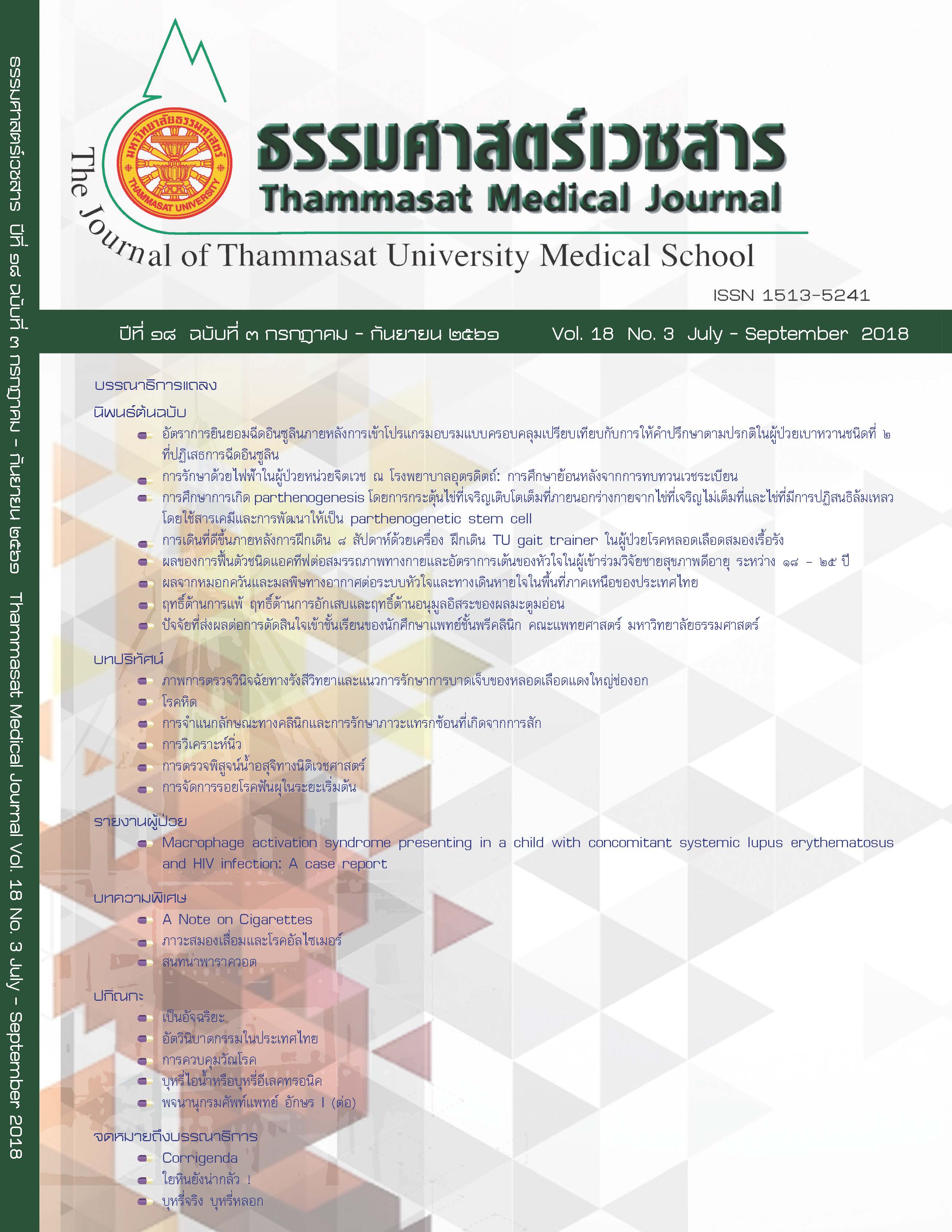Factors Influencing Preclinical Medical Students of Thammasat University's Decisions on Attending Live Lectures
Keywords:
Lecture Attendance, Preclinical Medical Students, Faculty of Medicine Thammasat University, Factor, Bahavior, AttitudeAbstract
Introduction: Lecture-based learning has all along been the main method used among almost all curriculum worldwide. However, it is concerned that new generation students tend to avoid complying with these traditional scheme by missing lecture classes, likewise in Thammasat medical school. In order to encourage the students’ class participation, this study, hence, aims to explore the factors affecting not only their decisions on attending class but also their concentration during the lectures. Moreover, we try to address their main purpose of studying whether it would be either their examination scores or their future clinical application.
Method: A descriptive cross-sectional study is performed on the second- and third-year preclinical medical students in Thammasat medical school. A self-developed questionnaires were made using Likert-type scale to assess the influence levels of each factors on the students’ decision on class attendance, concentration during lectures, and purposes of studying. Data analysis is done by using frequency, mean, standard deviation, Mann-Whitney U Test, Kruskal-Wallis Test, and Spearman Rank Correlation. All stages of this research were approved by the Human Ethics Committee of Thammasat University No.1 (Faculty of Medicine). research code: “MTU-EC-SA-6-216/59”
Result: 315 out of 340 students who received the questionnaires responded (92.65%). The number of female students, second year students, and well-performed students attending classes is greater than male students (p < 0.05), third year students (p < 0.001), and low-performing students (p < 0.001), respectively. No significant difference between projects are found. Positive correlation exists between class attendance and GPAX (p < 0.001, r = 0.247). The most clearly influencing factors are clinical correlation lecture (x̄ = 4.49), the lecturer’s ability to provide contents (x̄ = 4.47) and classroom equipment (x̄ = 4.29). The early start time of the lecture that students were most and least likely to attend class were 9.00 am and 8.00 am, respectively Sleepiness impacts on students’ concentration in class the most (x̄ = 4.60), and affects on males significantly more than females (p = 0.006). As the students’ purpose of studying, clinical usage is valued slightly more than the examination scores. Interestingly, the low-performing students appear to aim less about the examination (p = 0.018); and comparing to the third-years, the second-years aim for the clinical purpose slightly more (p = 0.011).
Discussion and Conclusion: To encourage overall class attendance, faculty should focus primarily on male, third year, and low-performing students. The live-lecture’s attractiveness - especially the lecturer’s teaching styles, clinical correlation and class environments – should be considerably adjusted. Both passing an examination and being a proficient clinicians should be upheld as a mutual goal inspiring the students in studying medicine. Also, the students’ habits on sleeping and time management should be developed so as to improve their performance in classes.


